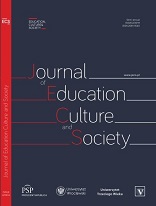In Search of the Sorcerer’s Apprentice: between Lucian and Walt Disney
In Search of the Sorcerer’s Apprentice: between Lucian and Walt Disney
Author(s): Damian KalitanSubject(s): Theatre, Dance, Performing Arts
Published by: Fundacja Pro Scientia Publica
Keywords: Lucian; Sorcerer; Apprentice; reception; Walt Disney; Paul Dukas; film; Fantasia
Summary/Abstract: At first glance, the movie by Jon Turteltaub entitled The Sorcerer’s Apprentice (2010) seems not to have any connections with Greco-Roman antiquity whatsoever. To find the hidden connection we have to go back to year 1797 when Johann Wolfgang Goethe published his famous ballad Der Zauberlehrling (The Sorcerer's Apprentice) Almost a century later, this work inspired a French composer Paul Dukas to write his masterpiece, the symphonic scherzo L’apprenti sorcier. Dukas’ music became the leitmotif of both Disney’s movies: Fantasia (1940) and Fantasia 2000 (1999) whose action is based on Goethe’s ballad. Also, the basic elements of the plot were used in one of the episodes of the series Alfred Hitchcock Presents (1961). This is where we touch the ancient roots of the story. A good friend of J.W. Goethe, Christopher Martin Wieland, happened to have published in 1789 the first complete German translation of Lucian of Samosata’s (120-180 AD) works, including a dialogue entitled Philopseudes (The Lover of Lies). The tenth story told in Philopseudes turned out to be very similar to the one written by J. W. Goethe and then adapted into Disney’s and Turteltaub’s movies. In my paper I try to show the transmission of the Lucianic text from antiquity to modern film adaptations. The original Lucian tale, rewritten by J.W. Goethe, becomes very influential. The so-called “sorcerer’s apprentice syndrome” can be found at the root of many fantastic stories in which humans could not curb their creations (i.e. robots) which eventually would turn against their makers. The primary focus of this paper is on how the story of a young apprentice changed over centuries and how it was adopted by cinematography.
Journal: The Journal of Education, Culture, and Society
- Issue Year: 3/2012
- Issue No: 1
- Page Range: 94-101
- Page Count: 8
- Language: English

